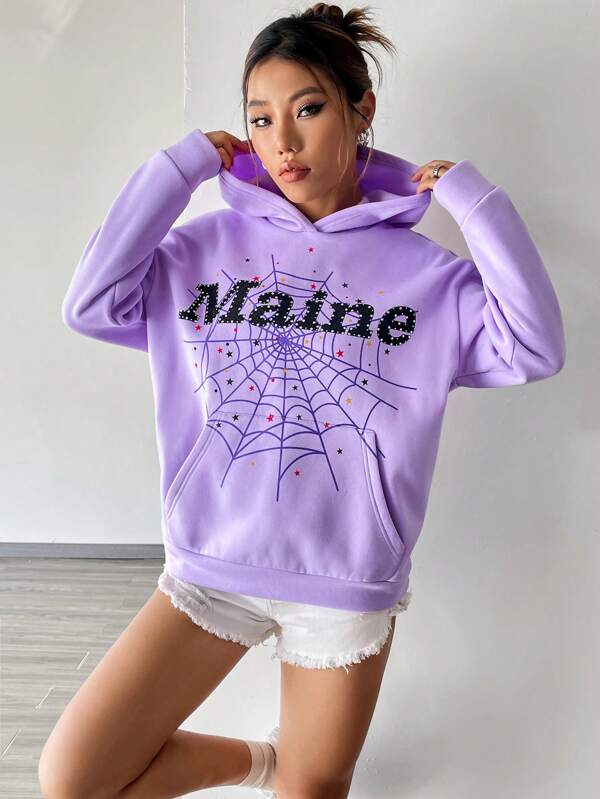Instant Fashion Gratification:
In the digital age, the intersection of technology and fashion has given rise to a dynamic and influential force – social media platforms. Visit now https://superhoodieofficial.com/ These digital arenas have become the new runways, where trends are set, styles are showcased, and fashion enthusiasts connect globally. Social media platforms have not only transformed the way we consume and perceive fashion but have also democratized the industry, allowing everyone to participate in the dialogue of style. This article explores how social media has amplified the influence of fashion, turning it into a global phenomenon accessible to the masses
One of the most significant ways social media has impacted the fashion industry is by providing instant gratification. Platforms like Instagram, Pinterest, and TikTok have become visual playgrounds where fashion enthusiasts can explore and share their sense of style. Fashion influencers and designers can instantly showcase their latest creations to a global audience, creating a real-time connection between the runway and the consumer.
Fashion shows, once exclusive events attended only by industry insiders, are now live-streamed and dissected on social media platforms. This immediacy has fueled the desire for the latest trends, transforming the way consumers engage with fashion. The fast-paced nature of social media has accelerated the fashion cycle, with trends rising and falling at a rapid pace.
Democratization of Fashion:
Social media has broken down the barriers of entry into the fashion world. In the past, the industry was largely controlled by a select few fashion houses and magazines. Today, anyone with a smartphone and a sense of style can become a fashion influencer or start their own fashion blog. This democratization has shifted the power dynamics, allowing for a more diverse representation of styles and perspectives.
Instagram, in particular, has become a breeding ground for fashion influencers who have gained significant followings by showcasing their unique styles. These influencers often collaborate with brands, creating a new avenue for marketing and influencing consumer choices. The ability for individuals to curate and share their fashion journey has given rise to a more inclusive and diverse fashion landscape.
Global Fashion Communities:
Social media has connected fashion enthusiasts from every corner of the globe, Check it now https://spiderofficial.us/ creating a sense of community that transcends geographical boundaries. Fashion trends are no longer confined to specific regions or cultures but can spread like wildfire through the interconnected web of social media. Platforms like Twitter and Instagram have become virtual fashion capitals where users can engage in conversations about the latest trends, share styling tips, and discover new designers.
This global connectivity has also opened doors for international designers to gain recognition beyond their local markets. Fashion weeks are no longer exclusive to New York, Paris, Milan, or London; they now unfold on the screens of millions worldwide. Social media has transformed fashion into a universal language that speaks to people from diverse backgrounds and cultures.
Influencer Marketing and the Rise of Micro-Influencers:
Social media platforms have given rise to a new breed of celebrities – influencers. These individuals have the power to sway consumer decisions and shape trends through their curated content and engaged follower base. Brands recognize the influence of these individuals and have turned to influencer marketing as a powerful tool for promoting their products.
While mega-influencers with millions of followers have a broad reach, the rise of micro-influencers with smaller, niche audiences has proven equally impactful. These micro-influencers often have a more authentic connection with their followers, making their fashion recommendations and collaborations more genuine. The accessibility of social media has allowed these influencers to emerge from all walks of life, further contributing to the democratization of fashion.
Social Commerce:
The integration of shopping features directly into social media platforms has revolutionized the way consumers discover and purchase fashion. Instagram, Facebook, and Pinterest have introduced shopping functionalities that allow users to seamlessly transition from inspiration to transaction. Users can now shop for the latest trends with just a few taps, blurring the lines between content consumption and commerce.
This shift towards social commerce has transformed social media into a virtual shopping mall, creating a new avenue for fashion brands to connect with consumers. The ability to directly purchase items featured on social media has made fashion more accessible, turning it into a click-and-buy experience.
Conclusion:
Social media platforms have become powerful catalysts in shaping and amplifying the influence of fashion. From providing instant gratification and democratizing the industry to fostering global fashion communities and redefining marketing strategies through influencers, the impact is undeniable. As technology continues to evolve, social media will likely play an even more significant role in shaping the future of fashion, making it an ever-evolving and accessible cultural phenomenon. The pixels on our screens have transformed into the threads of a global fashion tapestry, weaving together diverse styles, voices, and perspectives.

